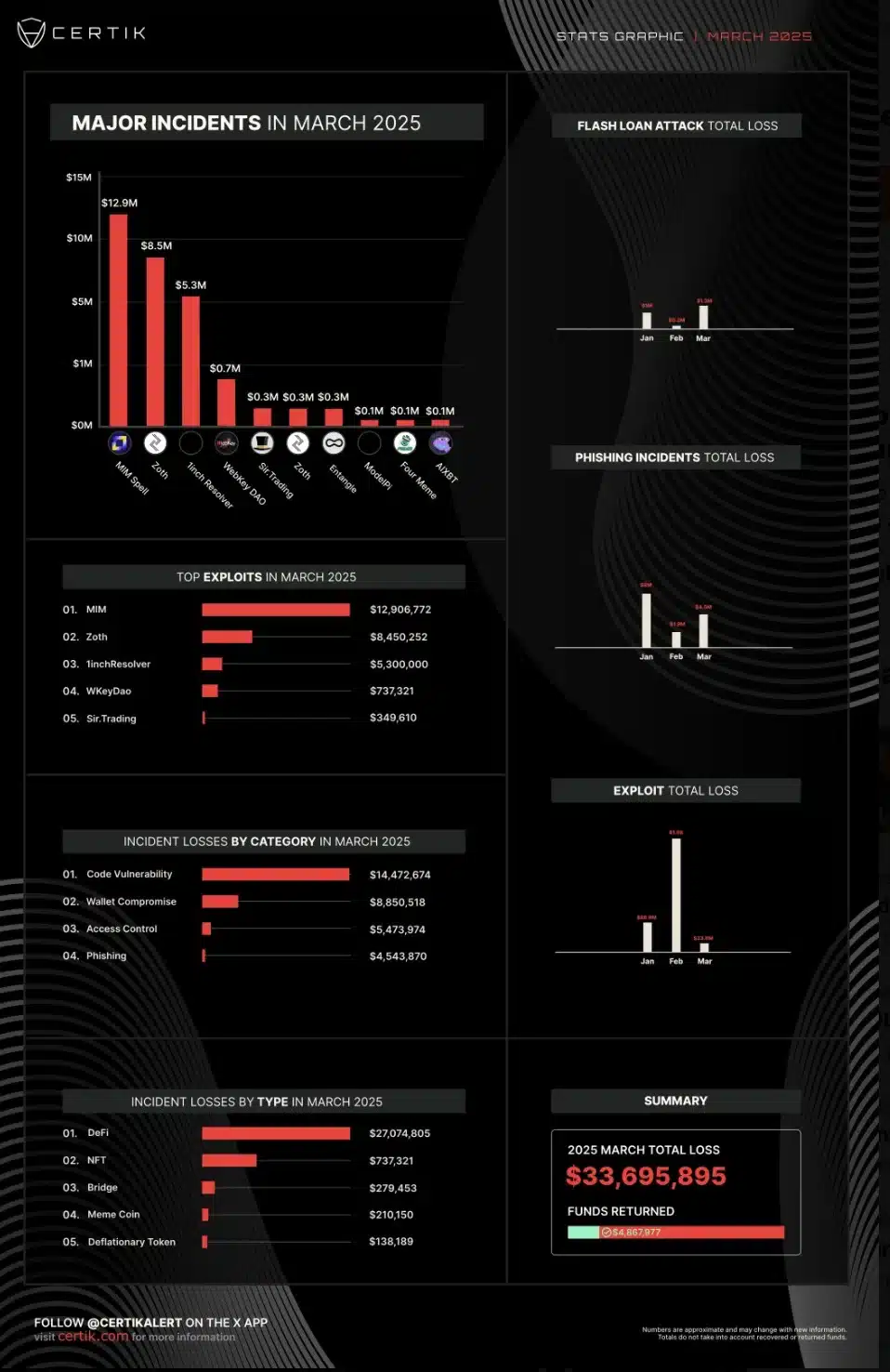- Crypto scam and hack losses dropped significantly to $28.8 million in March
- Paul Atkins aims to create a rational, coherent crypto regulatory framework as SEC Chair
Despite the turbulence in 2025 so far, a promising sign of market recovery has emerged lately.
March sees a dip in crypto scams
Losses from crypto scams, exploits, and hacks plummeted to just $28.8 million in March – A dramatic decline from February’s staggering $1.5 billion. Figures for the latter were primarily driven by the Bybit hack.
This sharp drop suggests that security measures may be improving or that attackers are finding fewer vulnerabilities to exploit.
According to data and stats presented in an X post by blockchain security firm CertiK,
“Code vulnerabilities accounted for the most losses, at over $14 million, while wallet compromises were used to steal over $8 million.”
Among the few notable exploits in March, the most significant was a $13 million smart contract breach on 25 March. This exploit targetted the decentralized lending protocol Abracadabra.money.


Source: CertiK Alert/X
What led to the decline?
According to a report from a blockchain security firm, the attacker manipulated the system by repeatedly borrowing funds, liquidating their own positions, and borrowing again without repaying.
Remarking on the same, CertiK said,
“This was due to the liquidation process not overwriting records in RouterOrder that counted as collateral, allowing the exploiter to falsely borrow additional funds after liquidation.”
In addition to the significant exploit of Abracadabra.money, March saw other high-profile losses within the crypto space too.
The restaking protocol Zoth saw a breach, with over $8.4 million in assets stolen after the deployer’s wallet was compromised.
While some funds were returned, including a recovery of $5 million by decentralized exchange aggregator 1inch through a bug bounty agreement, the total losses for the month were over $33 million.
A notable addition to this tally was an unreported loss of 400 Bitcoin, valued at $34 million, by an unidentified Coinbase user.
Additionally, phishing scams and spoofing crypto exchanges may have contributed to over $46 million in potential losses. Figures such as these simply emphasize the ongoing risks in the crypto ecosystem.
Is the Trump admin proving to be better than Biden’s?
These episodes also highlight a shift in the regulatory approach under the Trump administration, compared to the Biden administration’s stringent position.
Hence, with mounting concerns over crypto scams and security breaches, the introduction of a well-defined regulatory framework could significantly reduce such losses.
In fact, Paul Atkins, nominated by President Trump for the SEC chair, has already pledged to establish a “rational” and “coherent” regulatory structure for the crypto industry.
As expected, in his statement during the U.S. Senate Banking Committee hearing, he put it best when he said,
“A top priority of my chairmanship will be to work with my fellow Commissioners and Congress to provide a firm regulatory foundation for digital assets through a rational, coherent, and principled approach.”
This move could bring much-needed clarity and stability, paving the way to mitigate risks and further reduce crypto scams and losses.







